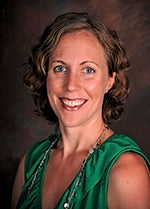Ann Austin: Community needs to play different roles
Published 9:00 am Sunday, July 3, 2016
Live United by Ann Austin
“Community will be created the moment we decide to act as creators of what it can become.” This statement came from a booklet I recently read, titled “Civic Engagement and the Restoration of Community.”
As individual members of a community we don’t always feel like we have the power to influence our surroundings. But lately, there have been many exciting things happening — from people who had an idea and decided to plant seeds to see what would grow.
The dog park near the Brookside Boathouse came from a seed of an idea that was planted in the fertile ground of our local Rotary Club. And with the help of some dynamic leaders, it didn’t take long to become a reality. Our dog park is now a place where more and more community members (and their joyous dogs) are connecting. The Boathouse itself is an example of a successful, collective community effort.
Another great idea put into motion by our community is the Albert Lea Rocks painted rock activity that took off at the beginning of the summer. People from around our community — adults and children alike — are painting, hiding, finding and re-hiding rocks and posting the results on Facebook. It’s another great way for people to connect and enjoy the many fun places we have around Albert Lea.
These are some examples of simple improvements to our quality of life; but is it possible for our community to create a healthier, happier place for everyone and overcome more complex barriers? I believe so.
Our United Way hosted a training at the end of May with an organization called Skybrook Associates.
Over a two-day period, various organizations and volunteers gathered together to learn more about how to make collaborations work and engage in systems mapping to recognize the interconnectedness of local programs.
Though each organization has a different focus, we discovered they are all connected, either through the individuals they serve and the complexity of the needs they have, or through a need for additional support to make things happen.
Some of the key concepts that came from our discussions included:
We must consider how policies impact us at the local level and make sure we do not hurt the people we are trying to help
Systems are nested within each other. Our work is only good if the rules we are following are meant to help create better systems
Whatever we do is creating a pattern. Whatever our quality of interactions, that’s what pattern emerges
Something our consultant, Dylan, said which affected me on a deep level was that we shouldn’t try just to make one thing work, but make everything work. What a concept! This causes a shift in perception and ownership of the issues we are working on and helps build a collective approach.
When we consider systemic issues such as homelessness, generational poverty, dysfunctional family relationships, drug abuse/addiction, mental health, etc., there are so many factors which influence each other and ultimately a person’s success in overcoming or finding effective methods to address what they are struggling with.
With such overwhelming obstacles, people need a whole community of support — and our community needs to be willing to step up to better understand what roles each of us can play to encourage them on whatever path they need to travel to find healing, self-sufficiency, joy in responsibility, engagement in a greater purpose and — ultimately — hope for a better tomorrow.
I will end with my favorite quote during that training by Dylan Skybrook: “Your quality of participation creates the world.”
Let us keep our hearts open to each other and engage in meaningful conversations about what can be. We can be a light for others.
Ann Austin is the executive director of the United Way of Freeborn County.


